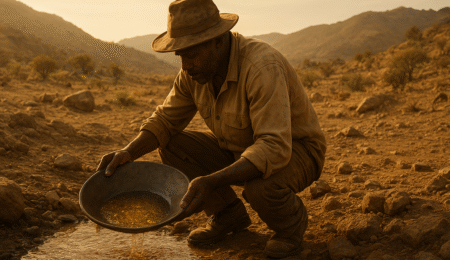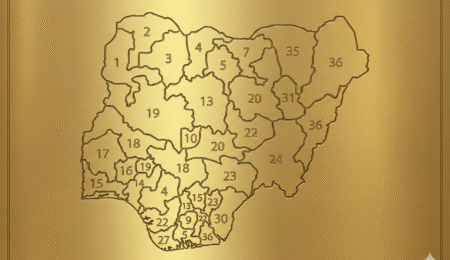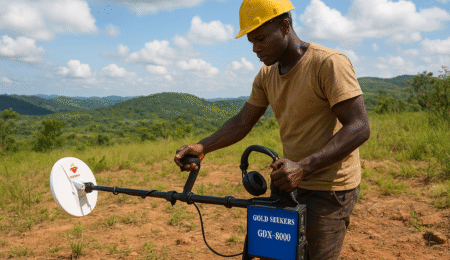For centuries, mining in Nigeria relied on manual labor, rudimentary tools, and hazardous working conditions. However, the global mining industry has undergone a seismic shift—leveraging automation, robotics, and artificial intelligence (AI) to enhance efficiency, safety, and profitability. Nigeria, with its vast untapped mineral resources, stands at a pivotal moment where adopting these technologies could transform its mining sector into a modern, competitive, and sustainable industry.
This article explores how automation and robotics are reshaping Nigerian mining, the benefits they bring, and real-world examples of successful implementations.
The Shift from Traditional to Automated Mining
Historically, Nigerian miners used pickaxes, shovels, and artisanal methods to extract minerals like gold, tin, and coal. While these techniques were effective for small-scale operations, they posed significant risks—including accidents, low productivity, and environmental degradation.
Today, automation and robotics are changing the game by:
- Reducing human exposure to dangerous environments (e.g., underground mines, blast zones).
- Increasing precision and efficiency in drilling, blasting, and material transport.
- Lowering operational costs through optimized resource use and reduced downtime.
Key Technologies Driving the Change
- Autonomous Drilling & Hauling Systems
- Self-driving trucks and drill rigs (like those from Caterpillar and Komatsu) are being deployed in mines worldwide, reducing fuel consumption and human error.
- In Nigeria, companies like Thor Explorations are exploring automated haulage to improve gold mining efficiency.
- Robotic Sorting & Ore Processing
- AI-powered robotic arms and sensor-based sorting systems can separate valuable minerals from waste rock faster than manual methods.
- This reduces processing time and increases recovery rates—critical for Nigeria’s artisanal and small-scale mining (ASM) sector.
- Drones for Surveying & Monitoring
- Drones equipped with LiDAR and thermal imaging provide real-time data on mine sites, improving exploration accuracy and safety compliance.
- Nigerian firms are already using drones for illegal mining surveillance and site mapping.
- Predictive Maintenance with AI
- IoT sensors and machine learning predict equipment failures before they happen, minimizing costly breakdowns.
- This is particularly useful for Nigeria’s mining sector, where machinery maintenance has been a persistent challenge.
Case Studies: Automation Success Stories in Africa
While Nigeria is still in the early stages of adopting mining automation, other African countries offer valuable lessons:
- South Africa’s Sibanye-Stillwater uses autonomous loaders and drones to enhance safety in deep-level gold mines.
- Zimbabwe’s Unki Mine (a platinum operation) employs automated ventilation and collision avoidance systems for underground safety.
- Ghana’s Gold Fields Tarkwa Mine uses autonomous haul trucks, cutting fuel costs by more than 15%.
These examples prove that automation isn’t just for advanced economies—it’s scalable for Africa, including Nigeria.
Challenges & Opportunities for Nigeria
Challenges
- High Initial Costs: Automation requires significant investment in technology and training.
- Infrastructure Gaps: Unreliable power and internet connectivity could hinder IoT and AI adoption.
- Workforce Adaptation: Miners need upskilling to operate and maintain automated systems.
Opportunities
- Government Support: Policies like the Solid Minerals Development Fund (SMDF) could incentivize tech adoption.
- Local Innovation: Nigerian startups and universities can develop cost-effective automation solutions.
- Foreign Partnerships: Collaborations with global mining tech firms (e.g., Sandvik, Epiroc) could fast-track implementation.
The Future: A Tech-Driven Mining Boom?
Nigeria’s mining sector contributes less than 1% to GDP—but with automation, it could rival oil and agriculture as a key revenue source. The 2007 Nigerian Minerals and Mining Act already encourages modernization, and private sector players are gradually embracing change.
By integrating robotics, AI, and IoT, Nigeria can:
- Boost mineral output while reducing environmental harm.
- Attract foreign investment with safer, more efficient mines.
- Create high-tech mining jobs, moving beyond manual labor.
Conclusion
The shift from pickaxes to AI-driven mining isn’t just inevitable—it’s essential for Nigeria’s economic diversification. While challenges remain, early adopters of automation and robotics will gain a competitive edge in Africa’s rapidly evolving mining landscape.
The question is no longer if Nigeria will modernize its mining sector, but how fast.
READ Also:
The Ultimate Guide to Starting a Mining Company in Nigeria
Need a Mining License or Mineral Trade Permit in Nigeria? Here’s How We Can Help





Leave a Reply